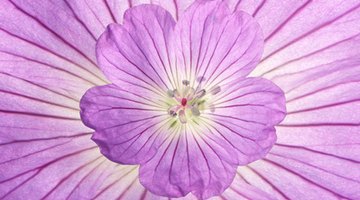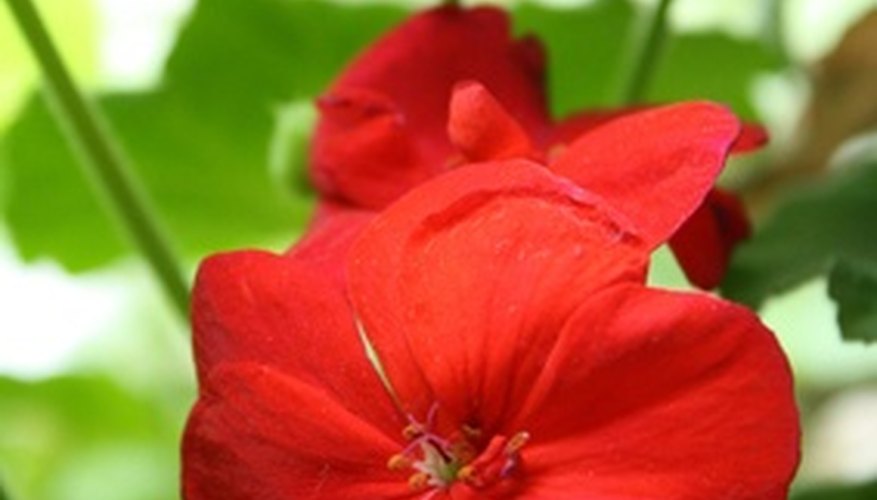Geraniums are reproduced by using both seeds and root cuttings; however, differences in the method of reproduction produces two separate types of geranium plants. Both reproductive styles of propagating geraniums have advantages and disadvantages.
Root Cuttings

Geraniums produced by root cuttings are genetic reproductions of the parent plant, but their mature plants will not produce seeds. Flowers from root cuttings are generally larger than those grown from seed. To propagate geraniums in this manner, you first cut the roots, then place the cuttings in a separate container until mature. You apply a rooting medium to the cuttings, which assists with the growth process.
- Geraniums produced by root cuttings are genetic reproductions of the parent plant, but their mature plants will not produce seeds.
Seed Geraniums

Geraniums grown from seed mature faster than cuttings, but they are not genetically the same as the parent plant. Plant characteristics from geraniums grown from seed may be influenced by cross-pollination, producing flowers of a different colour than the parent plant. A more compact plant is produced from seed; therefore, seed geraniums are less expensive than root-cut geraniums.
Propagation

Seed collection should take place three to four weeks after the flowers bloom and begin to darken. Wildflower.org suggests preserving collected seeds for later reproduction by placing them in a paper bag and storing them in the refrigerator until you are ready to plant. Plant both seeds and root cuttings outdoors in the late fall or early spring. Make your root cuttings the "thickness of a pencil," says "Fine Gardening" magazine. Take root cuttings during the dormant stage, between November and February, according to "Fine Gardening."
- Seed collection should take place three to four weeks after the flowers bloom and begin to darken.
- Take root cuttings during the dormant stage, between November and February, according to "Fine Gardening."
